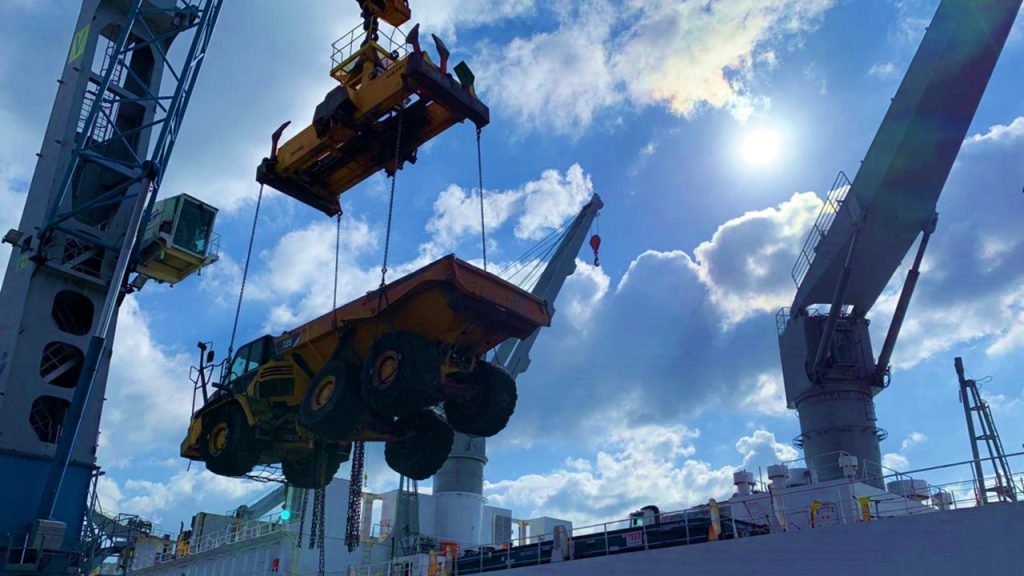In recent years, there has been a noticeable shift in the transportation and logistics industry towards breakbulk cargo in the Philippines. As globalization continues to reshape the world economy, businesses are increasingly relying on this method of shipping to transport their goods across borders efficiently and cost-effectively. Breakbulk cargo in the Philippines refers to the transportation of goods that cannot be containerized due to their large size, shape, or weight and must instead be loaded individually onto ships or trucks. This rise in breakbulk cargo is not only a reflection of changing trade patterns but also indicative of the unique advantages it offers over other forms of shipping.
Breakbulk cargo in the Philippines, once considered outdated and labor-intensive, is experiencing a remarkable resurgence. This traditional method of transporting goods has reemerged as a preferred choice for many Filipino companies due to its flexibility, reliability, and cost-effectiveness. As Filipino companies become more conscious of their supply chain vulnerabilities and seek alternatives to container shipping, breakbulk cargo is emerging as a viable solution that offers numerous advantages.
This article delves into the rise of breakbulk cargo in the Philippines and explores the factors contributing to its newfound popularity in today’s global trade landscape.
Click here to view our breakbulk cargo services.
The Growth Of Breakbulk Cargo Transportation
The Philippines has experienced remarkable growth in breakbulk cargo transportation over the past decade. Breakbulk cargo in the Philippines refers to goods that are not containerized but rather transported individually or in smaller quantities. With its strategic location and vast coastline, the Philippines has become an ideal destination for breakbulk cargo shipments.
One of the key factors contributing to the growth of breakbulk cargo transportation in the Philippines is the country’s robust infrastructure development. The government has invested heavily in port facilities and road networks, making it easier for breakbulk cargoes to be transported from seaports to their final destinations. Additionally, improvements in customs procedures and trade regulations have also played a significant role in facilitating the smoother movement of breakbulk cargoes.
Another factor driving the growth of breakbulk cargo transportation is the increasing demand for raw materials and construction equipment in the country. As the Philippines continues to experience rapid economic growth, there has been a surge in construction projects and infrastructure development. This has created a high demand for raw materials such as steel, cement, timber, and machinery. Breakbulk cargo transportation provides an efficient means of delivering these bulky and heavy goods to construction sites across the country.
Furthermore, the government’s focus on developing renewable energy sources has also contributed to the increase in breakbulk cargo transportation. The Philippines has set ambitious targets for renewable energy generation, aiming to increase its capacity from 5,438 megawatts in 2019 to 20,000 megawatts by 2040. This shift towards sustainable energy sources has created a need for transporting large and specialized equipment such as wind turbines and solar panels.
Breakbulk cargo transportation is essential in facilitating the delivery of these oversized components to remote locations where renewable energy projects are being developed.
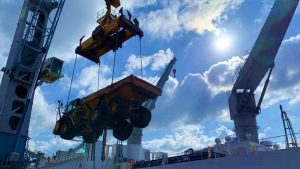
Overview Of Breakbulk Cargo In The Philippines
Breakbulk cargo in the Philippines has been a significant contributor to the country’s economy, playing a vital role in trade and commerce. Breakbulk refers to goods that are individually packed and loaded onto ships rather than being shipped in containers. This type of cargo consists of various items such as machinery, vehicles, construction materials, and other oversized or heavy goods.
The Philippines is strategically located in Southeast Asia, making it an ideal hub for breakbulk cargo in the Philippines. With its extensive coastline and numerous ports, the country has become an attractive destination for breakbulk shipments from all over the world. The ports of Manila, Cebu, Davao, and Batangas are among the busiest in terms of handling breakbulk cargo.
Breakbulk cargo in the Philippines plays a crucial role in supporting various industries in Luzon, Visayas, and Mindanao. For instance, it is instrumental in meeting the demands of infrastructure development projects across the archipelago.

Definition And Characteristics Of Breakbulk Cargo In The Philippines
Breakbulk cargo in the Philippines refers to individual pieces of cargo that are typically loaded and unloaded manually rather than being shipped in containers. This type of cargo is usually transported on vessels specifically designed to handle breakbulk shipments, which may include items such as machinery, vehicles, steel pipes, or project cargoes. In the Philippines, breakbulk cargo plays a significant role in the country’s economy due to its reliance on industries like agriculture and manufacturing.
One characteristic of breakbulk cargo is that it requires specialized handling equipment and infrastructure at ports. Unlike containerized shipments that can be easily transferred using cranes or forklifts, breakbulk cargo in the Philippines often needs labor-intensive methods for loading and unloading. The Philippines has invested heavily in developing facilities equipped with efficient material handling equipment to ensure smooth operations for breakbulk shipments.
Another defining characteristic of breakbulk cargo is its flexibility in terms of size and shape. This means that breakbulk cargo can come in a wide range of sizes and shapes, such as large machinery, vehicles, oversized equipment, or even materials like timber or steel. Due to its varied nature, each piece of breakbulk cargo in the Philippines may require different handling techniques and specialized equipment.
The flexibility of breakbulk cargo in the Philippines also extends to its transport options. Breakbulk cargo can be transported using a variety of modes, including ships, trucks, trains, and even aircraft in some cases. The choice of transport mode depends on factors such as the size and weight of the cargo, distance to be covered, time constraints, and cost considerations.
For example, larger breakbulk cargo items are often transported by specialized vessels known as heavy-lift ships or multipurpose vessels. These ships are equipped with cranes and other lifting equipment to handle heavy loads.
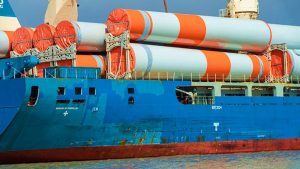
Historical Background: Origins And Early Development
The historical background of breakbulk cargo in the Philippines traces back to its early development during the Spanish colonial period. As a colony, the Philippines relied heavily on maritime trade for economic growth and sustenance. Ships would dock at major ports like Manila, Cebu, and Iloilo to unload their cargoes, which were then sorted and distributed manually by stevedores.
During this time, breakbulk cargo handling became an essential part of the country’s trading system. Breakbulk refers to goods that are individually loaded and unloaded from a ship rather than being containerized. This method allowed for greater flexibility in handling various types of goods, such as timber, textiles, spices, and other products that could not be easily packaged or transported in bulk.
The origins of breakbulk cargo handling can be traced back to the galleon trades between Spain and its colonies. These trades involved the transportation of valuable goods such as gold, silver, and precious gems. As the galleons arrived at their destination ports, they would be unloaded by stevedores who carefully handled each individual item. This meticulous process ensured that no damage was done to the fragile cargo.
Over time, breakbulk cargo handling became a standard practice in maritime trade. Ships from various nations began utilizing this method to transport a wide range of goods across oceans and continents.
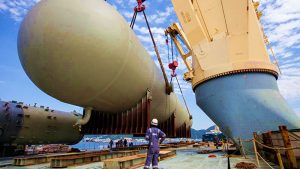
The Role Of The Philippines In Breakbulk Cargo:
Breakbulk cargo plays a crucial role in the global trade industry, and the Philippines has emerged as a significant player in this sector. With its strategic location at the crossroads of major international shipping routes, the country has become a hub for breakbulk cargo operations. Its bustling ports, including Manila and Cebu, have attracted numerous multinational companies seeking efficient transportation solutions for their oversized or non-containerized goods.
One reason behind the Philippines’ growing prominence in breakbulk cargo in the Philippines is its extensive network of infrastructure. The government has invested heavily in port development and modernization projects to accommodate larger vessels and handle bulk shipments effectively. This commitment to improving logistics capabilities has enabled Philippine ports to handle diverse types of cargo, such as machinery, vehicles, construction materials, and heavy equipment, with ease.

Current Trends And Market Analysis
The breakbulk cargo market in the Philippines is experiencing significant growth and transformation. With its strategic location in Southeast Asia, the country has become a key player in global trade routes. As a result, there has been increased demand for breakbulk cargo services to handle diverse goods that cannot be transported via containerized shipping.
One of the current trends in the breakbulk cargo industry is the rise of specialized logistics providers. These companies offer tailored solutions for handling oversized and heavy cargo, such as machinery, equipment, and project cargo. They provide expertise in navigating complex regulatory requirements and ensuring efficient transportation from point A to B.
Moreover, technological advancements are also shaping the market landscape. Breakbulk cargo operators are adopting digital platforms and systems to streamline operations and enhance communication with customers.

Discussion On The Country’s Strategic Location And Infrastructure
The Philippines’ strategic location in Southeast Asia has positioned it as a significant player in the global trade market. Situated at the crossroads of major international shipping routes, this archipelagic nation serves as a gateway to various Asian countries and beyond. With its proximity to major shipping lanes, the Philippines offers convenient access for maritime transportation, making it an ideal hub for breakbulk cargo operations.
Breakbulk cargo refers to goods that are too large or heavy to be transported in standard containers. These shipments often require specialized handling and equipment, such as cranes and heavy-duty trucks. The country’s infrastructure plays a crucial role in facilitating the efficient and safe movement of breakbulk cargo in the Philippines.
To meet the demands of breakbulk cargo operations, the Philippine government has invested heavily in developing its ports and road networks.
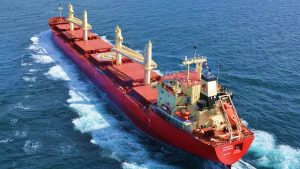
Factors Contributing To The Rise Of Breakbulk Cargo In The Philippines:
The Philippines has seen a significant rise in breakbulk cargo in recent years, and several factors have contributed to this trend. First and foremost, the country’s strategic geographic location plays a crucial role. Situated in the heart of Southeast Asia, the Philippines serves as a gateway between East Asia and the rest of the world. This favorable position allows for efficient transportation and distribution of breakbulk cargo in the Philippines, making it an attractive destination for international trade.
Additionally, the steady growth of industries such as construction, energy, and manufacturing has fueled the demand for breakbulk cargo in the Philippines. These sectors require heavy machinery, equipment, and oversized materials that cannot be transported using standard shipping containers. Breakbulk cargo in the Philippines provides a flexible solution for transporting these goods efficiently while ensuring their safe delivery.
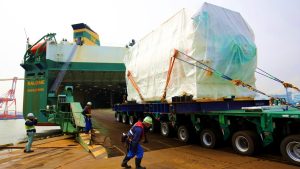
The Advantages Of Breakbulk Cargo Transportation
Breakbulk cargo transportation plays a crucial role in the Philippines’ economy, offering numerous advantages for businesses and industries alike. One key advantage is flexibility. Unlike containerized cargo, breakbulk shipments can be tailored to meet specific requirements, allowing for greater customization and adaptability. This flexibility enables businesses to transport a wide variety of goods, including oversized or irregularly shaped items that cannot fit into standard containers.
Another advantage of breakbulk cargo in the Philippines is cost-effectiveness. While container shipping may seem more efficient at first glance, it often comes with hidden costs, such as demurrage fees and equipment rentals. Breakbulk allows for better utilization of space on vessels, resulting in reduced shipping costs per unit compared to full-container-load shipments. Additionally, breakbulk shipments often require fewer handling processes compared to container shipping, reducing labor costs and minimizing the risk of damage or loss.

Success Stories In The Philippine Breakbulk Industry
The breakbulk cargo industry in the Philippines has experienced remarkable success stories in recent years. With its strategic location and well-developed port infrastructure, the country has become a major player in handling breakbulk cargoes. Breakbulk cargo in the Philippines refers to goods that are transported individually rather than containerized or bulk-shipped, making it vital for industries such as manufacturing, construction, and energy.
One notable success story is the expansion of the Subic Bay Freeport Zone as a breakbulk cargo hub. Located northwest of Manila, Subic Bay has transformed from a former US naval base into a bustling economic zone with state-of-the-art facilities for handling diverse types of breakbulk cargoes. The development of this hub has attracted several multinational companies to set up their operations there, boosting job creation and contributing to the local economy.
Another success story is the rise of Philippine shipping companies specializing in breakbulk cargo services. These shipping companies have played a crucial role in supporting the growth of breakbulk cargo transportation within the country. With their expertise and dedication, they have successfully established themselves as reliable partners for businesses looking to transport large and unconventional cargoes.
One such company is Full Speed Chartering and Shipping Agency, Inc., which started as a small-scale operation but has now grown into one of the leading breakbulk cargo agents in the Philippines.
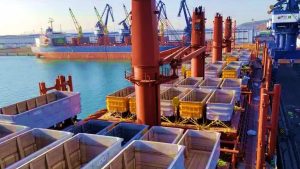
Challenges And Opportunities In Handling Breakbulk Cargo
Breakbulk cargo, a term used to describe cargo that is not containerized and is transported individually rather than in bulk, presents both challenges and opportunities for businesses in the Philippines. One of the main challenges faced when handling breakbulk cargo in this region is the lack of infrastructure that can accommodate such shipments. The country’s ports are primarily designed to handle containerized cargo, making it difficult for businesses to find suitable facilities for unloading and storing breakbulk cargo in the Philippines. Additionally, there may be limited equipment available for handling these types of shipments, further complicating the logistics process.
However, despite these challenges, there are also numerous opportunities associated with handling breakbulk cargo in the Philippines. With its strategic location at the heart of Southeast Asia and its strong shipping industry, the country has immense potential to become a major hub for breakbulk cargo transportation.
Analysis Of Port Capacity, Logistics, And Workforce Capabilities
The Philippines, an archipelago comprising more than 7,000 islands, has always been a strategic location for shipping and trade. With its growing economy and increasing foreign investments, the demand for efficient port capacity and logistics solutions has become crucial. This article provides an analysis of the current state of port capacity, logistics, and workforce capabilities in the Philippines, with a specific focus on handling breakbulk cargo.
Breakbulk cargo refers to goods that are transported individually rather than in containers or bulk vessels. It includes items such as machinery parts, vehicles, steel products, and other oversized or heavy cargo. The efficient handling of breakbulk cargo in the Philippines requires specialized infrastructure at ports and skilled labor capable of managing complex operations. In recent years, the Philippine government has made significant efforts to upgrade its ports to accommodate the growing demands of breakbulk cargo shipments.
Looking for a Breakbulk Cargo Company in the Philippines?
If you are in search of a reliable breakbulk cargo company in the Philippines, look no further than Full Speed Chartering and Shipping Agency, Inc. With our years of experience in the industry, we have established ourselves as a trusted name when it comes to handling breakbulk cargoes. Whether you need to transport heavy machinery, oversized equipment, or other specialized items, this company has got you covered.
- Email us: info@fullspeedchartering.com
- Call our 24-hour hotline: +63 939 375 3224
- Viber: +63 939 375 3224
- WhatsApp: +63 939 375 3224
- Facebook Messenger: Click here
- Click here to inquire
At Full Speed Chartering and Shipping Agency, Inc., we pride ourselves on our commitment to excellence and customer satisfaction. We have a team of highly skilled professionals who are dedicated to providing first-class services to our clients. From efficient planning and coordination to ensuring safe, on-budget, and timely delivery, we go above and beyond to meet our customers’ expectations.
With an extensive network of partners in the Philippines, Full Speed Chartering and Shipping Agency, Inc. offers seamless transportation solutions for your breakbulk cargo needs.
Takeaway: The Promising Future Of Breakbulk Cargo In The Philippines
The rise of breakbulk cargo in the Philippines has presented a promising future for the country’s shipping and logistics industries. With its strategic location in Southeast Asia, the Philippines is well-positioned to become a major hub for breakbulk cargo handling. The increasing demand for breakbulk services in the region, coupled with the country’s improving infrastructure and strong economic growth, bodes well for its prospects.
One key factor driving the growth of breakbulk cargo in the Philippines is the nation’s booming construction industry. As more infrastructure projects are being developed across the archipelago, there is a growing need to transport heavy and oversized equipment, materials, and machinery. Breakbulk cargo offers flexibility and efficiency in handling these types of goods, making it an ideal choice for construction companies.
Furthermore, international trade plays a significant role in fueling the growth of breakbulk cargo in the Philippines. The country has been actively engaging with global markets and forging trade agreements with various nations. As a result, there has been an increase in imports and exports of goods that require specialized handling methods such as breakbulk shipping. This trend is expected to continue as trade volumes between countries continue to grow.
Overall, with its favorable geographic location, thriving construction industry, and expanding international trade connections, it is clear that breakbulk cargo in the Philippines has a promising future. The country’s shipping and logistics sector is well-positioned to capitalize on this trend by investing in infrastructure development and enhancing its capabilities to meet increased demand efficiently.

